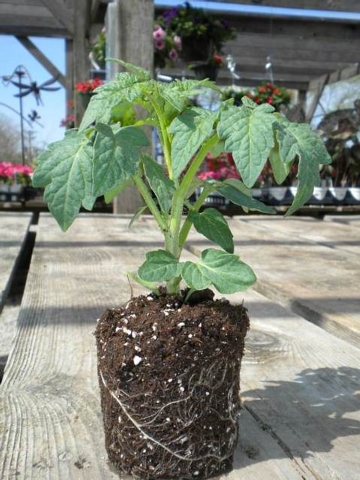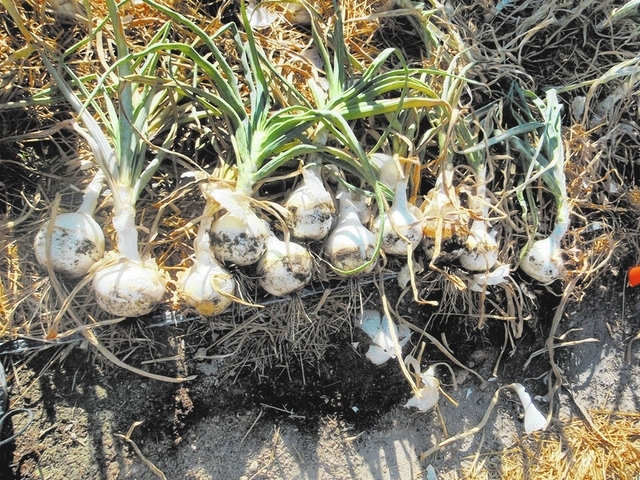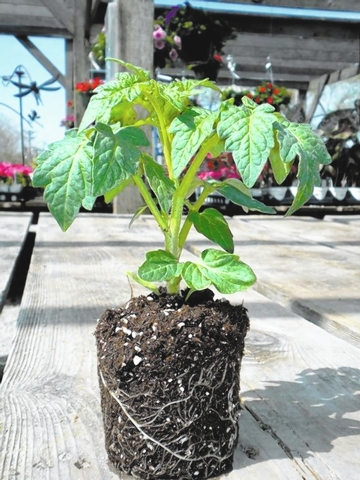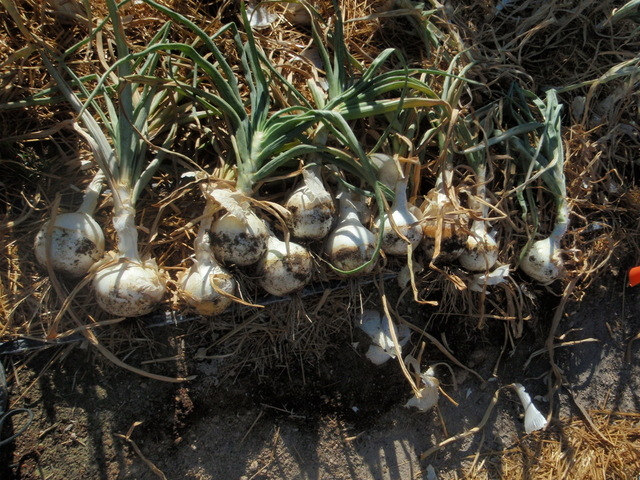Greenhouse transplants should be moved gradually
Q: I started seedlings in a greenhouse and transplanted them into my raised beds. But they are not growing at all. It’s been two weeks, and two have died, but the rest have not continued to grow.
A: Moving seedlings from a warm, still environment such as a greenhouse into one with different temperatures and wind, such as a raised bed outside, can be quite a shock on young plants.
Plants respond to dramatic changes in their environment differently than animals that have legs and can move to more hospitable environments.
Move greenhouse transplants gradually into less hospitable environments. This is called “hardening off” a plant. Hardening off plants might include opening the greenhouse so that the outside environment mixes with the hotter greenhouse environment or moving transplants into a garage or outside into a shaded and protected environment for a couple weeks before planting them.
There is a transition period when transplants show no signs of growth while their root system grows into its new environment. The larger the transplant, the greater the transplant shock or time needed to adjust.
Other situations cause transplants to just sit there and not grow. Plant transplants the same depth in the garden that they were growing in the pot. An exception is tomato. It can be planted deeper and the stem will root into garden soil if the soil is adequately amended.
Do not plant transplants in their peat pots directly into the garden. Peat pots, or other pots that are supposed to degrade, often create rooting problems. They interrupt water movement between the soil inside the pot and the surrounding soil. Remove as much of these types of containers as you can without damaging roots and then plant.
Tear off any part of a peat pot sticking above ground so water in the pot does not “wick up” to the outside air and dry out the roots.
Make sure the soil drains adequately and give transplants lots of water and do it often until they get established. Give transplants protection from damaging wind by putting up a small windbreak to protect the garden spot.
Q: I recently added a new irrigation system, new plants, rose bushes and even a small tree. Even if my roses bloomed, they were small and quick to wilt. The leaves as they came in were fantastic. Before the rose buds even opened they looked as if they had been burned around the edges. When they opened, black peppered the edges of the petals.
A: From your description it sounds like damage from western flower thrips. They attack the petals of flowers before they open and cause browning and wilting of flower buds.
You can apply Spinosad for some organic control but you will have to apply it multiple times about a week apart to get any kind of control.
Orthene sprays will work to some degree but they will affect the good insects and bees as well.
Another product to try is an insecticide containing imidacloprid listed in the ingredients. It is a systemic and if you apply it as a soil drench around the roses it will not interfere with the good insects.
Q: Do you know if pawpaw trees will grow here? If so, what type of environment and what type of soil amendments should I use?
A: I have never grown pawpaws here. Like filberts, hazelnuts and blueberries, they do not handle heat well, nor our alkaline soils and intense sunlight. For that reason, I have been curious about them as well.
They would definitely be a challenge, and for that reason they just get more interesting to try. If you were to try them, you should select the right exposure, modify the soil and mulch them. You will probably need two if you want fruit since they require a pollinator.
They are very sensitive to our full sunlight and require filtered sun when young. Once established, they can handle more sun but not our sun. Plant on the east side of the home for protection from the hot late afternoon sun.
Amend the soil with good compost to a depth of 18 inches. Use at least 50 percent good compost in the backfill mix. Acidify the soil with fine sulfur or aluminum sulfate to help keep the soil acidic.
They can have a pretty good taproot so your hole may have to be deep to accommodate for it. The roots are brittle so you must be careful when planting not to break them.
Provide plenty of water just like you would any normal fruit tree but like any fruit tree do not water daily. Mulch the trees with wood mulch to a depth of 3 to 4 inches and keep it away from the trunk the first four years.
Apply fertilizer twice a year; once in early spring and again in the fall. They do not set fruit very well so you may have to hand pollinate the flowers to aid them in fruit set and get more fruit on the tree.
Q: I bought a package of onion sets several months ago. I have some onions growing in my garden now and could use some ideas. They aren’t getting big. They’re mainly purple onions.
A: Onions can be planted in the fall from seed, but sets or transplants should be planted in the spring.
Onion sets are purchased as small, dried bulbs while transplants are small onion plants. Information supplied about planting onion transplants tells you they can dry out, but I have better luck if they are kept moist.
I like to soak onion sets in water for several hours before planting just as I do for large vegetable seed. In porous garden soils they tend to send up new growth more quickly and evenly. Transplants usually wilt for a day or two until they recover from the planting.
Once they start to grow I like to fertilize them with nitrogen, and then once a month, to force the tops to grow larger. Larger tops mean larger onions.
Onions first put their energy into their tops so the tops will get big and the bottoms do not until we get the right number of hours of darkness. Once they get the right length of day then the bulbs will start forming.
When you see flowers forming, pull them off and don’t let them develop. Harvest onions when the tops fall over. Don’t step on them.
Once dug, wash the dirt off and let them cure for a couple of days in the shade until the outside layers become papery. Once the tops dry down, cut them off within a couple inches of the bulbs.
Bob Morris is a horticulture expert living in Las Vegas and professor emeritus for the University of Nevada. Visit his blog at xtremehorticulture.blogspot.com. Send questions to extremehort@aol.com.































